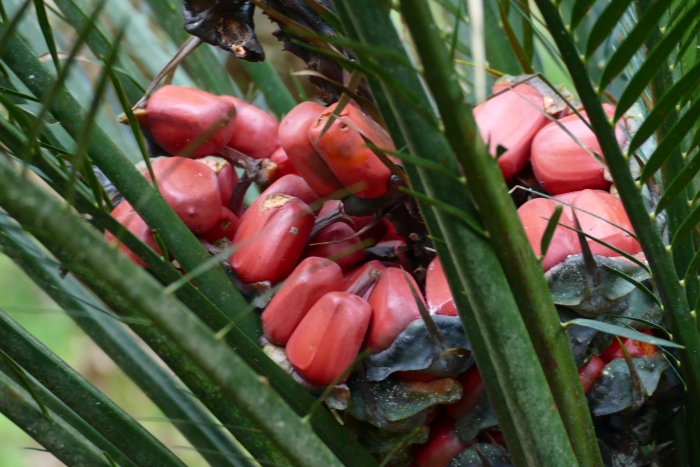Burrawang
(Macrozamia communis)
Burrawang (Macrozamia communis)
/
/

coenobita
CC BY 4.0
Image By:
coenobita
Recorded By:
Copyright:
CC BY 4.0
Copyright Notice:
Photo by: coenobita | License Type: CC BY 4.0 | License URL: http://creativecommons.org/licenses/by/4.0/ | Rights Holder: coenobita | Publisher: iNaturalist | Date Created: 2022-04-24T17:01:54-07:00 |
























Estimated Native Range
Summary
Macrozamia communis, commonly known as Burrawang, is a perennial cycad endemic to the sandy coastal and sclerophyll forests of eastern New South Wales, Australia. It is a slow-growing plant that can reach up to 10 feet (3 meters) in height with a spread of 6-10 feet (2-3 meters), featuring a thick trunk and a crown of large, arching, pinnate leaves. Burrawang produces large, pineapple-like seed cones primarily after fire events, which are an adaptation to its fire-prone native habitat. The seeds are a traditional food source for Indigenous Australians, though they require extensive processing to remove toxins before consumption.
Burrawang is valued for its unique appearance and is often used in cultivation as a specimen plant in gardens and landscapes that aim to feature native Australian flora. It is drought-tolerant once established and prefers well-drained soils in full sun to partial shade. While it is relatively low-maintenance, it is important to note that all parts of the plant are toxic if ingested without proper preparation. In cultivation, it can be susceptible to scale insects and should be monitored for infestations. The symbiotic relationship with nitrogen-fixing cyanobacteria allows it to thrive in nutrient-poor soils, and its longevity makes it a long-term feature in gardens.CC BY-SA 4.0
Burrawang is valued for its unique appearance and is often used in cultivation as a specimen plant in gardens and landscapes that aim to feature native Australian flora. It is drought-tolerant once established and prefers well-drained soils in full sun to partial shade. While it is relatively low-maintenance, it is important to note that all parts of the plant are toxic if ingested without proper preparation. In cultivation, it can be susceptible to scale insects and should be monitored for infestations. The symbiotic relationship with nitrogen-fixing cyanobacteria allows it to thrive in nutrient-poor soils, and its longevity makes it a long-term feature in gardens.CC BY-SA 4.0
Plant Description
- Plant Type: Shrub, Tree
- Height: 2-20 feet
- Width: 2-10 feet
- Growth Rate: Slow
- Flower Color: Non-Flowering
- Flowering Season: Summer
- Leaf Retention: Evergreen
Growth Requirements
- Sun: Full Sun, Part Shade
- Water: Low
- Drainage: Medium, Fast
Common Uses
Drought Tolerant, Low Maintenance, Rock Garden
Natural Habitat
Sandy coastal and sclerophyll forests
Other Names
Common Names: Burrawang, Zamia Palm
Scientific Names: , Macrozamia communis, Macrozamia amabilis, Macrozamia australis, Macrozamia eximia, Macrozamia hillii, Macrozamia pulchra, Macrozamia spiralis var. eximia, Macrozamia spiralis var. fraseri, Macrozamia spiralis var. hillii
GBIF Accepted Name: